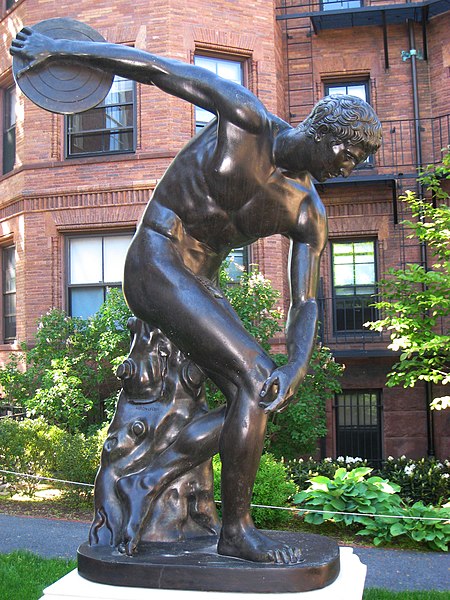Discobolus (Harvard University)
Bronze sculptures in MassachusettsHarvard UniversityMassachusetts sculpture stubsNude sculptures in the United StatesOutdoor sculptures in Cambridge, Massachusetts ... and 3 more
Sculptures of men in MassachusettsSculptures of sportsStatues in Massachusetts

A bronze replica of Myron's Discobolus is installed on the Harvard University campus in Cambridge, Massachusetts, United States.
Excerpt from the Wikipedia article Discobolus (Harvard University) (License: CC BY-SA 3.0, Authors, Images).Discobolus (Harvard University)
Massachusetts Avenue, Cambridge
Geographical coordinates (GPS) Address Nearby Places Show on map
Geographical coordinates (GPS)
| Latitude | Longitude |
|---|---|
| N 42.37713 ° | E -71.11937 ° |
Address
Harvard University
Massachusetts Avenue
02138 Cambridge
Massachusetts, United States
Open on Google Maps











